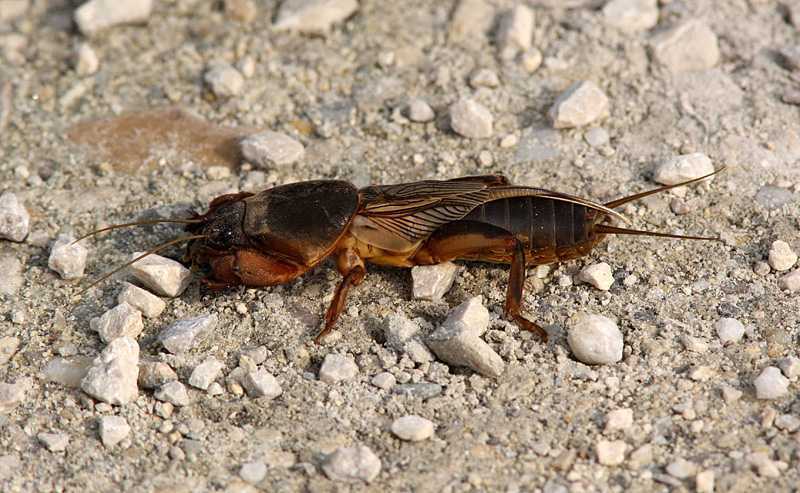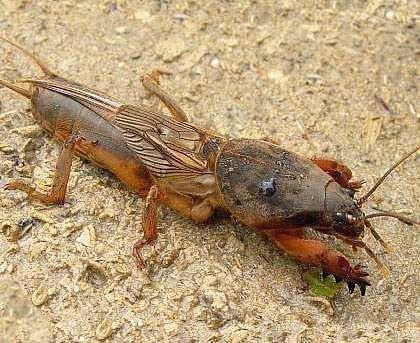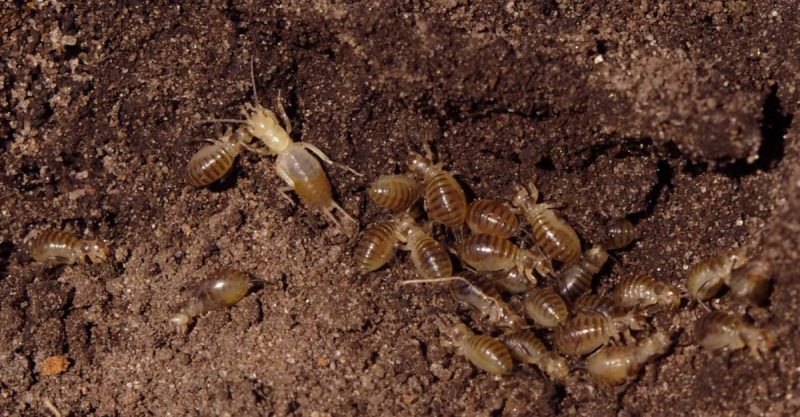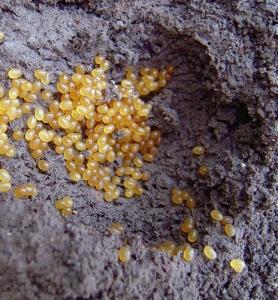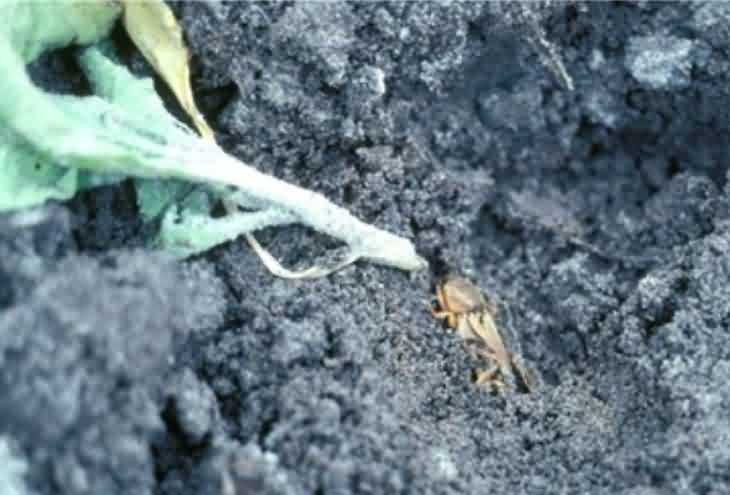European mole cricket (Gryllotalpa gryllotalpa) – pest management

The European mole cricket is a widespread species in Europe, Central and West Asia, North Africa, and Central Africa. It can be found in all areas, especially in vegetable gardens, greenhouses, polytunnels, and seedbeds, with soils rich in organic matter, where it causes considerable damage. It is also reported in field crops.
Description. The adult has a robust, elongated, almost cylindrical, chestnut-brown body, darker on the dorsal side and lighter on the ventral side (almost yellow), with pubescent skin. The body length varies between 35-50 mm. The egg is spherical, white-yellow. The larva resembles an adult, but it is smaller in size, and the wings are not developed.
Biology. It produces a generation once every 2 years. Adults appear in spring, in May. In June, after mating, the females dig galleries in the soil at a depth of 10-15 cm. At the end of these galleries, there are some egg-sized nests. In these nests, they lay their eggs. Incubation lasts, on average, 15-20 days, and the larvae remain in the nest for a few days, after which they begin to dig superficial galleries oriented in all directions.
By autumn, the larvae hatch twice, then return for hibernation. The following year, the larvae shed three more times and turn into adults, a stage in which they overwinter. The adults leave the hibernation places in February-March and migrate to the seedbeds.
Damage. The European mole cricket has an omnivorous diet, feeding on plant substrate, but also on live prey (earthworms, various larvae, or insects). The damages produced are direct, by affecting the root system of the plants (they cut the stems at the moment of sprouting or transplanting) or indirect, through the galleries dug for moving, bringing to the surface of the soil, sprouted seeds or young plants. The attacked plants wither and bend towards the ground, being able to be pulled easily. It is considered the most dangerous polyphagous species of vegetable plants, both in seedbeds and in vegetable gardens. It attacks tomatoes, peppers, eggplants, cucumbers, onions, carrots, potatoes, tobacco, radishes, cabbage, cauliflowers, etc. The larvae cause the most damage. The attack can be recognized by small humps on the surface of the ground (especially after rain or irrigation).
Pest management. It is recommended to carry out treatments with specific insecticides.
Recommended products
-
You can find products on a different store
Change Store -
You can find products on a different store
Change Store -
You can find products on a different store
Change Store -
You can find products on a different store
Change Store -
You can find products on a different store
Change Store -
You can find products on a different store
Change Store -
You can find products on a different store
Change Store -
You can find products on a different store
Change Store -
You can find products on a different store
Change Store -
You can find products on a different store
Change Store -
You can find products on a different store
Change Store -
You can find products on a different store
Change Store -
You can find products on a different store
Change Store -
You can find products on a different store
Change Store -
You can find products on a different store
Change Store -
You can find products on a different store
Change Store -
You can find products on a different store
Change Store -
You can find products on a different store
Change Store -
You can find products on a different store
Change Store -
You can find products on a different store
Change Store -
You can find products on a different store
Change Store -
You can find products on a different store
Change Store -
You can find products on a different store
Change Store -
You can find products on a different store
Change Store














































































































































































































































































































































































































































